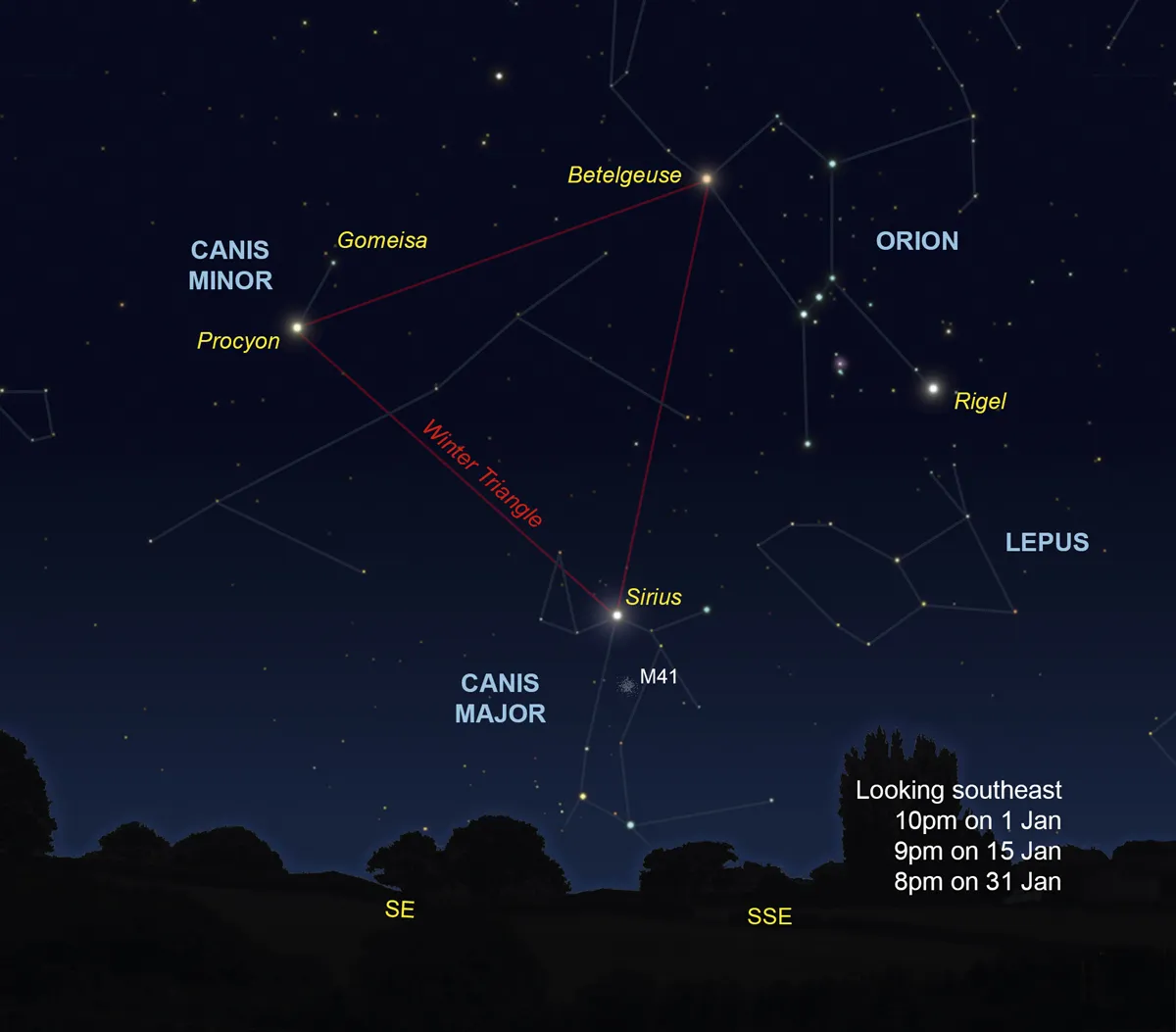There are several dogs represented in the night sky, the best known being Canis Major, the Great Dog. To spot it, start by finding its master, Orion – specifically, the three belt stars at the centre of that constellation. Extend their line down and left (southeast) to arrive at Sirius, the alpha star of Canis Major.
Known as the Dog Star, Sirius is a fairly close neighbour of the Sun, located 8.6 light-years away (one light-year being the distance light, travelling at nearly 300,000km/s, covers in a year – almost 10 trillion kilometres).
It’s the brightest star in the night sky, mostly because of its relative proximity to Earth. Sirius doesn’t get very high above the UK’s horizon, so its light is heavily influenced by atmospheric turbulence. This causes it to flicker, often displaying strong colours.
Canis Major is a fairly good representation of a dog – it’s easy to imagine the lively animal running up towards Orion. It has a pointed head to the upper left (northeast) of Sirius, a distorted rectangular body that slopes down and left of the star, and even a small tail, although that appendage and the dog’s back legs are very low in the sky when viewed from the UK.
To spot them using binoculars, look below (south) of Sirius by just under a binocular field of view. Given a clear, dark sky you should also see the lovely open cluster Messier 41 (M41) within the dog’s body.

To locate Canis Major’s companion, Canis Minor – the Little Dog – head up (north) from Sirius and left (east) into a relatively sparsely populated area of sky, with just one bright star. This is Procyon, the brightest star in Canis Minor. This constellation is less identifiable as a dog, basically formed from just the two stars, Procyon and Gomeisa.
Read more: